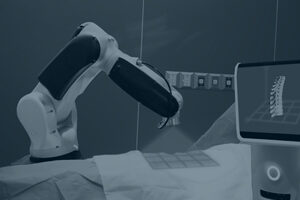The COVID-19 pandemic seems to be a crisis unlike any other in recent times. Governments and organizations continue to work toward containing and fighting this pandemic, but the growing humanitarian toll is severe. Consumers in lockdown need to stay home and businesses are temporarily closing or reducing production. This has a large impact on the current economy: a decrease in revenues and incomes, and unemployment rates rise.

The current lockdown implies large-scale quarantines, travel restrictions and social distancing. People are discouraged to travel beyond their neighborhood and limited to shopping in the local supermarkets and pharmacies. As outdoor activities, restaurants, theatres and cinemas are closed, people need to find entertainment at home, which means a shift to online or digital activities.
Google search report:
Meanwhile, pre-Coronaoutbreak the amount of mobile searches for “grocery delivery” grew over 130% in the past two years. According to NPD, the number of U.S. consumers of 18 and older who shopped online for groceries, whether delivery or pickup, increased by about 51 million from the quarter ending November 2018 to the quarter ending February 2019. The “take out” search interest has increased by 285% since the start of March 2020. Online tools such as these help people navigate through this new normal with up-to-date and relevant information. In the short term, marketers will need to find ways to be helpful to people trying to meet their most basic needs.
Another result of the lockdown measures is a decrease in income for workers and revenues for business. This will or is causing a recession. As a steep decline in consumer and business spending is imminent, a recession will kick in. Recent studies, such as the one visualized below from McKinsey & Company, show an increased demand in essential items like groceries, household supplies and home entertainment, household supplies, and paper goods. Other significant finding is the unmistakable shift to online shopping. In all categories of consumer goods, the decline in sales is consistently larger for physical stores than it is for online stores. This shows an important switch from buyers to online stores.
Fast moving and food companies are advised to increase efforts in online sales and e-commerce. They are urged to find new revenue models and hence are looking how to adopt new digital business models accommodating digital sales, marketing and product use. The fast moving industry could benefit from home and on the counter appliances equipped with automatic refill delivery options through online systems and e-commerce. Another exemplary design is the SOMAT Smart Wash appliance, which allows a new consumer experience, higher convenience, combined with direct sales connection with the users. When initiating the product design, one posed the questions: ‘Does it still make sense to put a detergent in the dish washing machine for every load?’ , ‘How can we connect directly to consumers making retailers superfluous?’ The result: an automated detergent disposer for washing machines backed with an e-commerce re-ordering system.
The important thing is to not lose focus on the longer term and to keep the option of product innovation open. A review of recent papers has identified that starting up the economy after the corona crisis will not be as swift as the fast action lockdowns that some countries have directed. The start-up or recovery phase will be a stepwise approach with a gradual renormalization period, until the end of 2020. And even then it is almost inevitable that human habits and behavior will have adapted to a new normal.
Some inevitable changes include:
The need for self-installation tools or remote assisted installation
Eventually, consumers will need to order repair and installation services. This will create the need for self-installation tools supported by VR/AR, remote monitoring, condition based maintenance or maintenance free products.
The need for self-diagnosis smarter devices
People will buy products with built-in self-diagnosis, advanced remote diagnostic and predictive maintenance to avoid the repairer’s visit.
The need for touchless interfaces
In addition, people who cannot work from home, will prefer touchless interfaces for professional appliances such as vending machines and coffee servers in public places. The need to integrate Voice conversational UI’s or gesture controlled human interfaces will help in realizing this future appliance need.
Appliances with direct connection to e-commerce back-ends or apps
Auto-reordering or app’s signaling the need to re-order will be required to help people omitting to travel to stores or limit the number of store visits.
The need for virtual shops
People are reluctant to move to the shop and getting in contacted with touched products and other persons. Full 3D Virtual shops wil bring new shopping experiences for product promoting, advice. Some first examples already are identified like a 3D virtual store from Volkswagen.
Digital connected appliances can be newly developed and in some cases there will not be an alternative. However, subsystem extension, integrable electronic modules and external add-on devices will be solutions to upgrade the existing devices that are already installed. They will have lower development costs and connect those devices to apps or e-commerce back ends for automatic order processing.
Although times are hard, everyone contributes by staying home and helping those in need to limit contaminations. Health care workers are fighting COVID-19 at the front, but everyone can help. Engineers and innovators are now also being summoned to do their duty, ensuring new solutions will be made to protect our society, fight the Coronavirus and to reduce plummeted sales and revive economics.
We are committed to our customers and helping everyone during these hard time and continue to publish our insights on our blog in the coming weeks.
Stay safe and stay home, so we can fight the Coronavirus together.
Download the perspective





